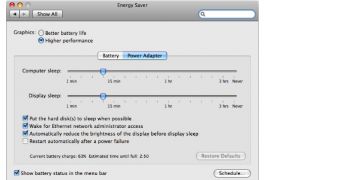It's been only hours that Apple decided to officially introduce its next-generation MacBook portable systems, during the October 2008 Special Event at Apple's “Town Hall,” and some have already had their first hands-on experience with the new MacBooks. Thanks to their reports, we can now have a general idea of what users should expect from Apple's NVIDIA-powered MacBook portable systems.
One of the most interesting hands-on experience was reported by the guys over at Engadget, who were interested in finding out how the new graphics switching feature on the new MacBook Pro system worked.
As some of you already know, Apple has decided to switch to NVIDIA for its MacBook's integrated graphics chips, from Intel's integrated graphics solution. Because of that, the newly launched MacBooks are now featured with NVIDIA's GeForce 9400M integrated graphics, while the MacBook Pro systems also have a discrete graphics solution with the NVIDIA GeForce 9600M GT, which enables users to choose between a higher performance and a better battery life. Now, this feature has been present in Windows portable PCs for some time now, but it seems that Apple too decided to make it available for its MacBooks.
Back to Engadget's hands-on experience with the MacBook Pro's switchable graphics feature. As it turns out, it is easier to switch to better graphics on a Sony VAIO Z (just like the one we had the opportunity of testing not too long ago), than with Apple's MacBook Pro. That is because, in order for the OS X to fully acknowledge your new System Preferences settings (yes, apparently there's no shortcut or quick way to switch to the discrete graphics solution, as with the VAIO Z), it will require a logout. It isn't exactly a reboot, but it will be somewhat of a bore nonetheless, especially if you happen to be in the middle of a project.
The logout and login are done rather quickly, although you still have to save all your work before applying. Ultimately, users could make a fair use of the new feature, but they might also be expecting some improvements from Apple in the future, with software upgrades.

 14 DAY TRIAL //
14 DAY TRIAL //